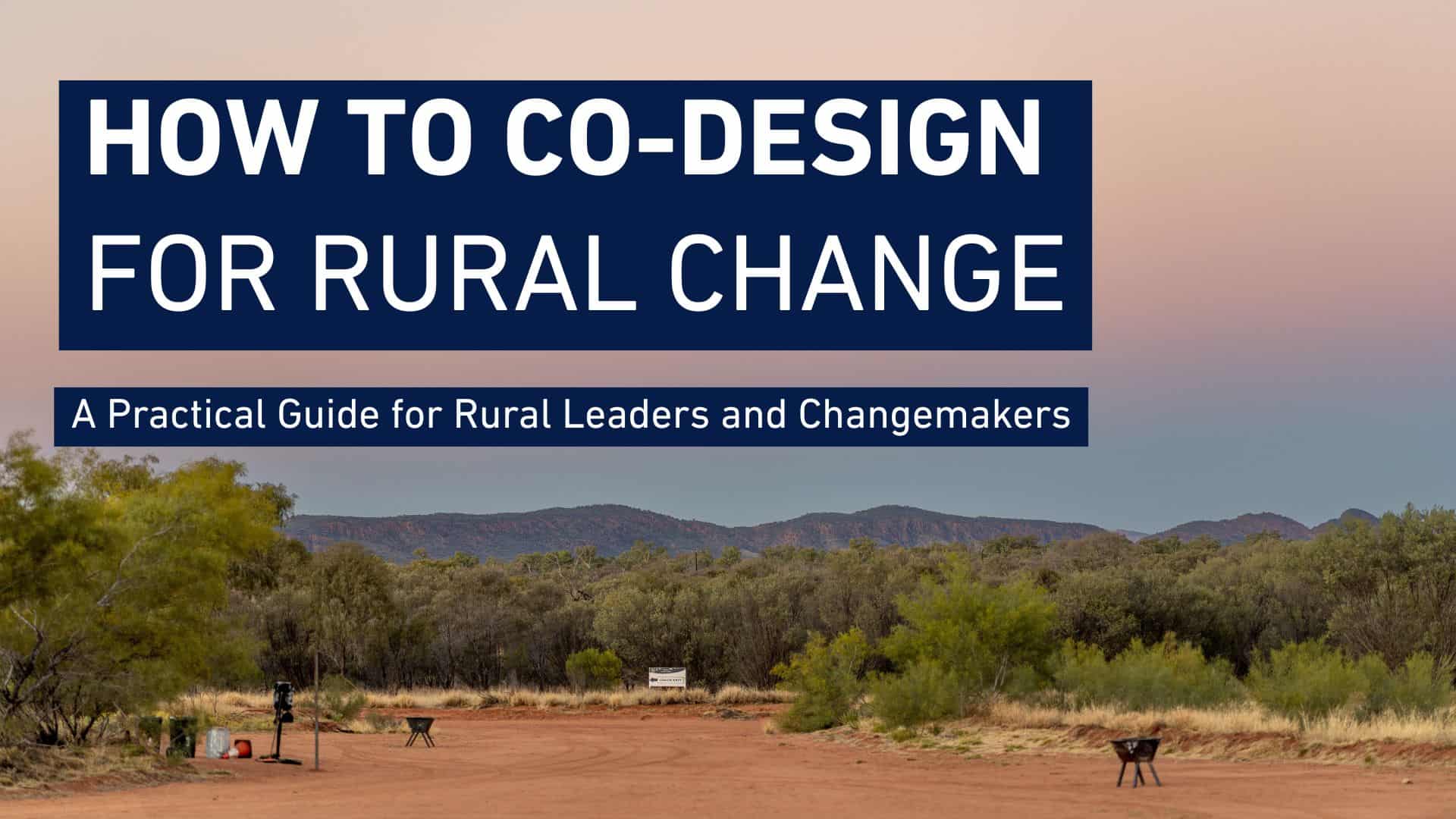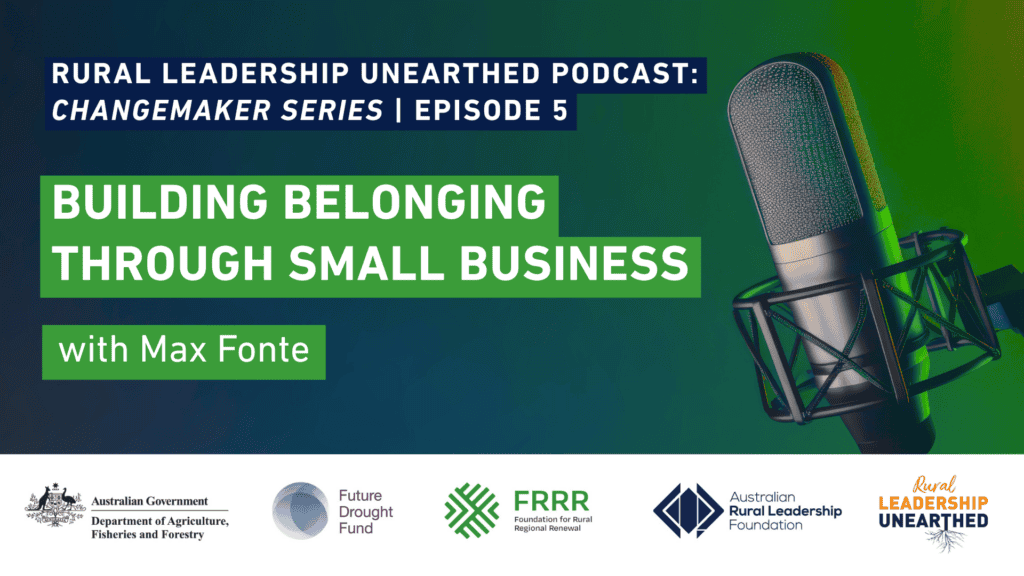Rural communities know their own problems better than anyone else. They understand what’s working, what isn’t, and what needs to change. Yet too often, solutions come from outsiders who’ve never lived the day-to-day reality of small-town life.
Co-design flips this on its head. Instead of having solutions imposed from above, it puts communities in the driver’s seat to identify problems and create their own answers.
What co-design actually means
Co-design isn’t just another way of saying “consultation.” It’s not about asking people what they think of ideas that have already been decided. Instead, it treats community members as equal partners from the very beginning.
The fundamental question changes from “What do you think of our plan?” to “What do you think we should do about this together?”
This shift matters because it recognises that the people living with a problem every day are often the best placed to understand what might actually work to solve it.
Four steps to co-design
While every community is different, most successful co-design projects follow a similar pattern with four key stages. Think of these as a roadmap rather than rigid rules—you can always go back to an earlier step when new ideas emerge.
Step 1: Discover – Start by really listening
Before jumping into solutions, spend time understanding what’s actually happening in your community. This means talking to people, watching how things work (and don’t work), and collecting stories about what matters most.
The best questions to ask are open-ended ones:
- What’s working well in our community right now?
- What challenges keep coming up?
- If we could change one thing, what would make the biggest difference?
- Who else should be part of this conversation?
Remember: you’re not trying to confirm what you already think you know. You’re trying to discover things you haven’t considered before.
Step 2: Define – Agree on what needs fixing
Once you’ve gathered different perspectives, work together to identify which problems matter most. This isn’t about finding the easiest issues to tackle, it’s about understanding what will make the biggest difference to people’s lives.
Take time to understand the history behind current challenges. Often, what looks like a simple problem on the surface has roots that go much deeper. Understanding these connections helps you address causes rather than just symptoms.
Step 3: Develop – Create solutions together
Now comes the creative part: brainstorming possible solutions and testing them out on a small scale. The key is to try things quickly and cheaply, learn what works, and adapt based on what you discover.
Run workshops or meetings in formats that work for your community. Some people think better in small groups, others prefer one-on-one conversations. Make sure everyone can contribute in a way that feels natural to them.
Start small with pilot projects. It’s much easier to learn from a small experiment that doesn’t work than to fix a large program that’s gone off track.
Step 4: Deliver – Put ideas into action
Implementation should happen as a partnership, not as something done to the community. Keep reviewing and adjusting as you go—even the best-planned solutions need tweaking once they meet real-world conditions.
Throughout all four steps, make sure you’re hearing from a wide range of voices, especially people who don’t usually get asked for their opinions. The quieter voices often have the most valuable insights.
Common pitfalls to avoid
Even with good intentions, co-design projects can run into predictable problems. Knowing what to watch for helps you navigate around them:
The consultation trap: If you’ve already decided what the solution should look like, you’re not doing co-design, you’re just seeking approval. Real co-design starts with defining the problem together.
The usual suspects problem: Make sure you’re not just talking to the same people who always get involved in community projects. Actively seek out different perspectives, especially from people who might be affected by the changes but don’t usually have a voice in decisions.
The sustainability challenge: External funding and expert help won’t last forever. Build local skills and capacity so the work can continue long after outside support ends.
The timing trap: Rural communities have natural rhythms busy seasons, school holidays, weather patterns. Plan your process around these realities, not against them.
Making changes that last
The best co-design projects don’t just solve immediate problems, they build the community’s ability to tackle future challenges.
Create simple ways for people to stay involved in decisions that affect them. Document what you learn so others can benefit from your experience. Celebrate progress along the way to maintain momentum and build trust.
Getting started
You don’t need a big budget or formal training to begin co-designing solutions in your community. Start with these simple steps:
Reflect: Think about one challenge in your community that affects multiple people. Consider who might have different perspectives on this issue—not just community leaders, but people who experience the problem firsthand.
Act: Have an informal conversation with someone you wouldn’t normally talk to about community issues. Ask what they think about the challenge and really listen to their answer. You might be surprised by what you learn.
Connect: Find others who are interested in tackling problems differently. Sometimes just talking through ideas with someone else can spark solutions you wouldn’t have thought of alone.
Co-design recognises something important: rural communities already have much of the wisdom needed to solve their own problems. The key is creating processes where that wisdom can be shared, built upon, and turned into action that makes a real difference to people’s lives.





